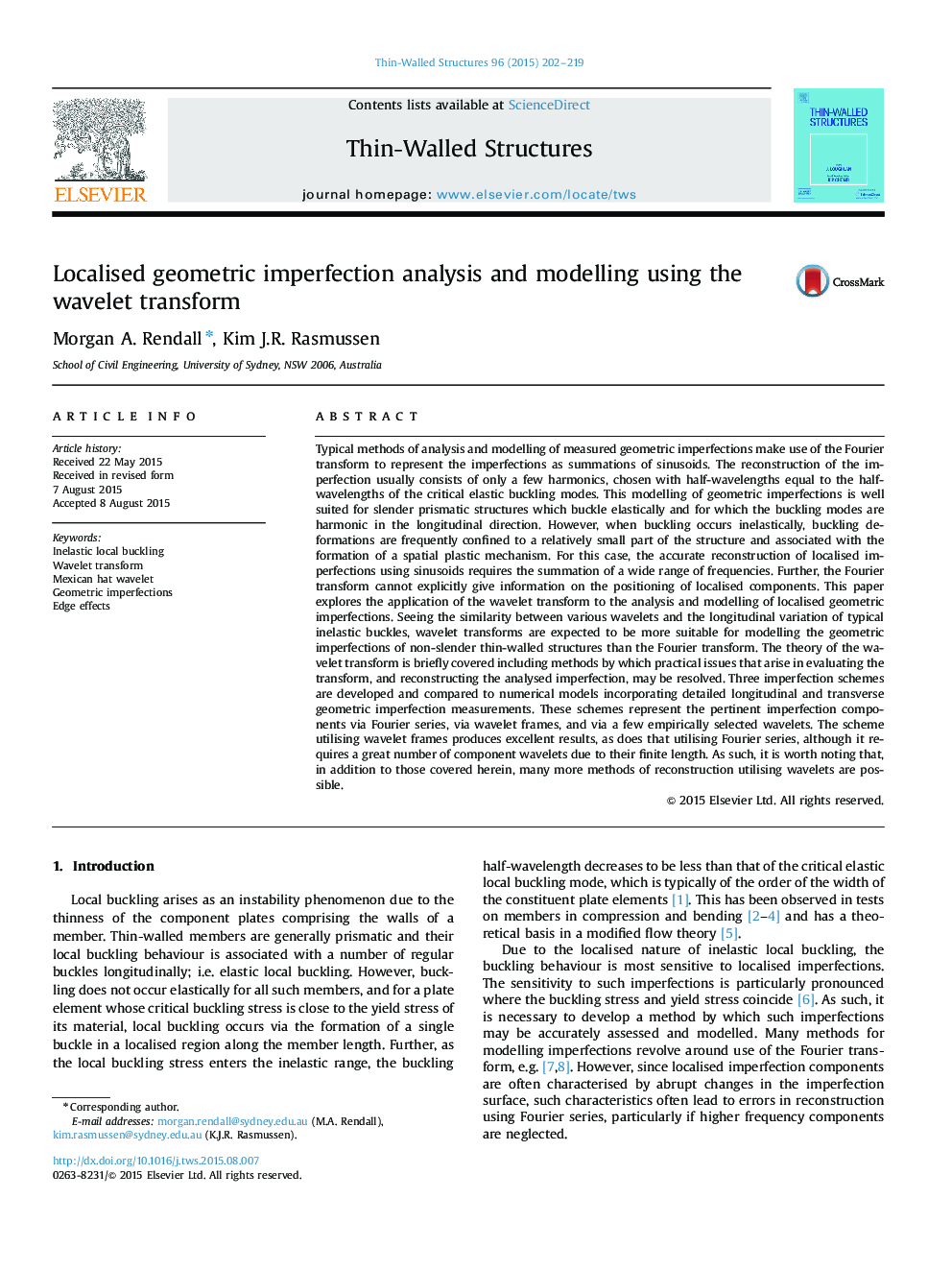| کد مقاله | کد نشریه | سال انتشار | مقاله انگلیسی | نسخه تمام متن |
|---|---|---|---|---|
| 308661 | 513561 | 2015 | 18 صفحه PDF | دانلود رایگان |
• The wavelet transform is introduced in the context of geometric imperfection analysis.
• Basic actions for suppressing edge effects in analysed signals are elucidated.
• Geometric imperfection models are developed and tested against experimental behaviour of SHS stub columns.
• Models using wavelet frames perform at least as well as those using Fourier series expansion.
Typical methods of analysis and modelling of measured geometric imperfections make use of the Fourier transform to represent the imperfections as summations of sinusoids. The reconstruction of the imperfection usually consists of only a few harmonics, chosen with half-wavelengths equal to the half-wavelengths of the critical elastic buckling modes. This modelling of geometric imperfections is well suited for slender prismatic structures which buckle elastically and for which the buckling modes are harmonic in the longitudinal direction. However, when buckling occurs inelastically, buckling deformations are frequently confined to a relatively small part of the structure and associated with the formation of a spatial plastic mechanism. For this case, the accurate reconstruction of localised imperfections using sinusoids requires the summation of a wide range of frequencies. Further, the Fourier transform cannot explicitly give information on the positioning of localised components. This paper explores the application of the wavelet transform to the analysis and modelling of localised geometric imperfections. Seeing the similarity between various wavelets and the longitudinal variation of typical inelastic buckles, wavelet transforms are expected to be more suitable for modelling the geometric imperfections of non-slender thin-walled structures than the Fourier transform. The theory of the wavelet transform is briefly covered including methods by which practical issues that arise in evaluating the transform, and reconstructing the analysed imperfection, may be resolved. Three imperfection schemes are developed and compared to numerical models incorporating detailed longitudinal and transverse geometric imperfection measurements. These schemes represent the pertinent imperfection components via Fourier series, via wavelet frames, and via a few empirically selected wavelets. The scheme utilising wavelet frames produces excellent results, as does that utilising Fourier series, although it requires a great number of component wavelets due to their finite length. As such, it is worth noting that, in addition to those covered herein, many more methods of reconstruction utilising wavelets are possible.
Journal: Thin-Walled Structures - Volume 96, November 2015, Pages 202–219
